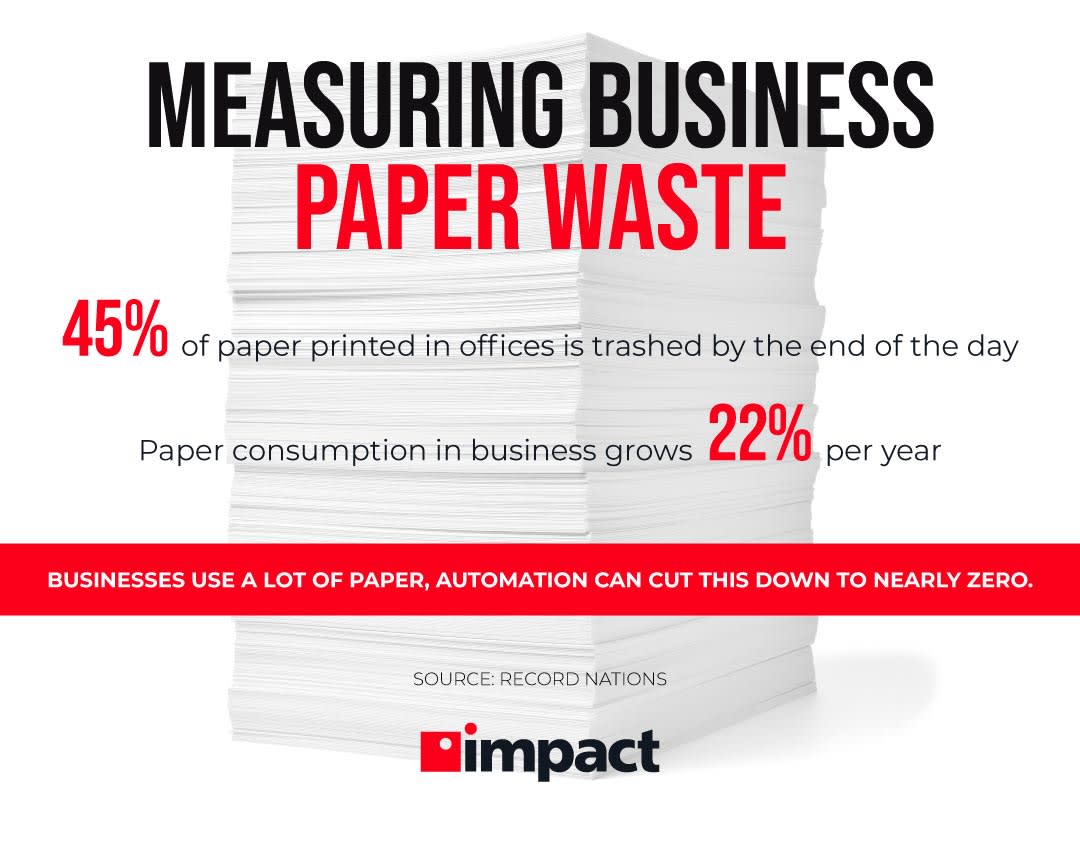Becoming more eco-friendly and investing in more efficient technology, like automation, provides many major competitive advantages to businesses. Learn more about what those advantages are, how automation helps businesses become greener, and why it’s worth the investment now.
Why Should Businesses Try to Become More Sustainable?
Becoming more sustainable has become a goal of many businesses, sometimes because it’s what their customers want—91% of customers would consider changing purchasing habits based on a company’s environmental impact—and because sustainability and green initiatives can result in higher profits.
87% of CEOs believe that sustainability is important for profits
One reason for that increase in profit is that focusing on green investments can result in a 30% saving on utility costs and, depending on the business’ location, green initiatives could result in tax breaks and other incentives.
Becoming more “green” in business can have a lot of advantages from increased profits to building trust with customers to improving your public image. No matter the reason, one effective way to become more eco-friendly is to implement automation into everyday processes.
73% of Americans would stop purchasing from a company that doesn’t care about the environment
Automation’s role in helping businesses achieve their goals of becoming more sustainable is acceleration. Implementing automation into existing or new processes helps increase efficiency by giving businesses the tools they need to better monitor their operations to reduce waste (and the costs associated with it) while increasing efficiency.
Here are some more ways that automation helps businesses become more eco-friendly.
Automation Makes Going Paperless Easy
From spreadsheets to reports to tax documents to memos, businesses go through a lot of paper every day. Business automation helps them save money and reduce paper waste by replacing them with digital documents.
Not only does this save paper, but it also actually makes it easier for everyone in the organization to access and utilize the information because it is stored securely via the cloud and can be made accessible from anywhere with any device.
Businesses produce over 21 million tons of paper waste each year and the average office worker goes through 10,000 sheets of paper.
Additionally, this saves businesses a lot of physical space by eliminating the need for most filing cabinets and other document storage solutions that can take up valuable square footage, saving money in space costs or opening more room to work and collaborate.
Reduce Wasted Materials and Supplies
Along with reducing paper waste, automation can help businesses better manage their supplies. Ink, toner, folders, and other day-to-day supplies can be automatically monitored and ordered.
In warehouses, automated warehouse management systems (WMS) can be another way to help promote sustainable practices by using AI algorithms to connect all aspects of a process—warehouses, distribution, etc.—to provide more transparency into operations.
The insights generated by this lowers the number of resources and time required to trace and recover products and can be used to tweak inventory to reduce waste.
Use Automation and Analytics to Adjust Energy Usage and Increase Efficiency
Automation helps businesses in a wide variety of industries conserve energy and reduce costs. Whether it’s saving energy consumption in the office with less printing or more efficient hardware, light control systems in retail stores, or optimizing the operation of a factory floor.
Energy savings in manufacturing can be particularly significant with some companies saving 55 gigawatt-hours of energy per year. Because of the high number of machines working on a factory floor or warehouse, manufacturers use up and need a lot of energy to produce. Automation makes those machines much more efficient at what they do which decreases heating requirements and reduces cycle times, lowering the amount of energy necessary for operations.
Optimize Your Transport and Shipping
Shipping, transportation, and logistics are all very large contributors to a business’ carbon footprint, especially for those in industries like manufacturing where this represents a substantial portion of operations. Automation can help in the planning stages to help prepare more optimized routes and shipping schedules and improve warehouse functions for more efficient shipping groups.
This helps reduce emissions from trucks, planes, and other members of a vehicular fleet by reducing unnecessary trips and lowering overall carbon emissions produced.
Bottom Line
Whether it’s to increase profits, improve reputation, or to connect with your customers, taking steps to become more eco-friendly can be very beneficial for businesses. Investing in green technology like automation can achieve this and improve the overall effectiveness of business processes at the same time.
If you want to learn more about the types of business automation available and how it can help your business thrive, visit our resource center or contact an Impact representative today to hear more about our digital innovation solutions.
